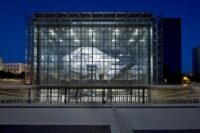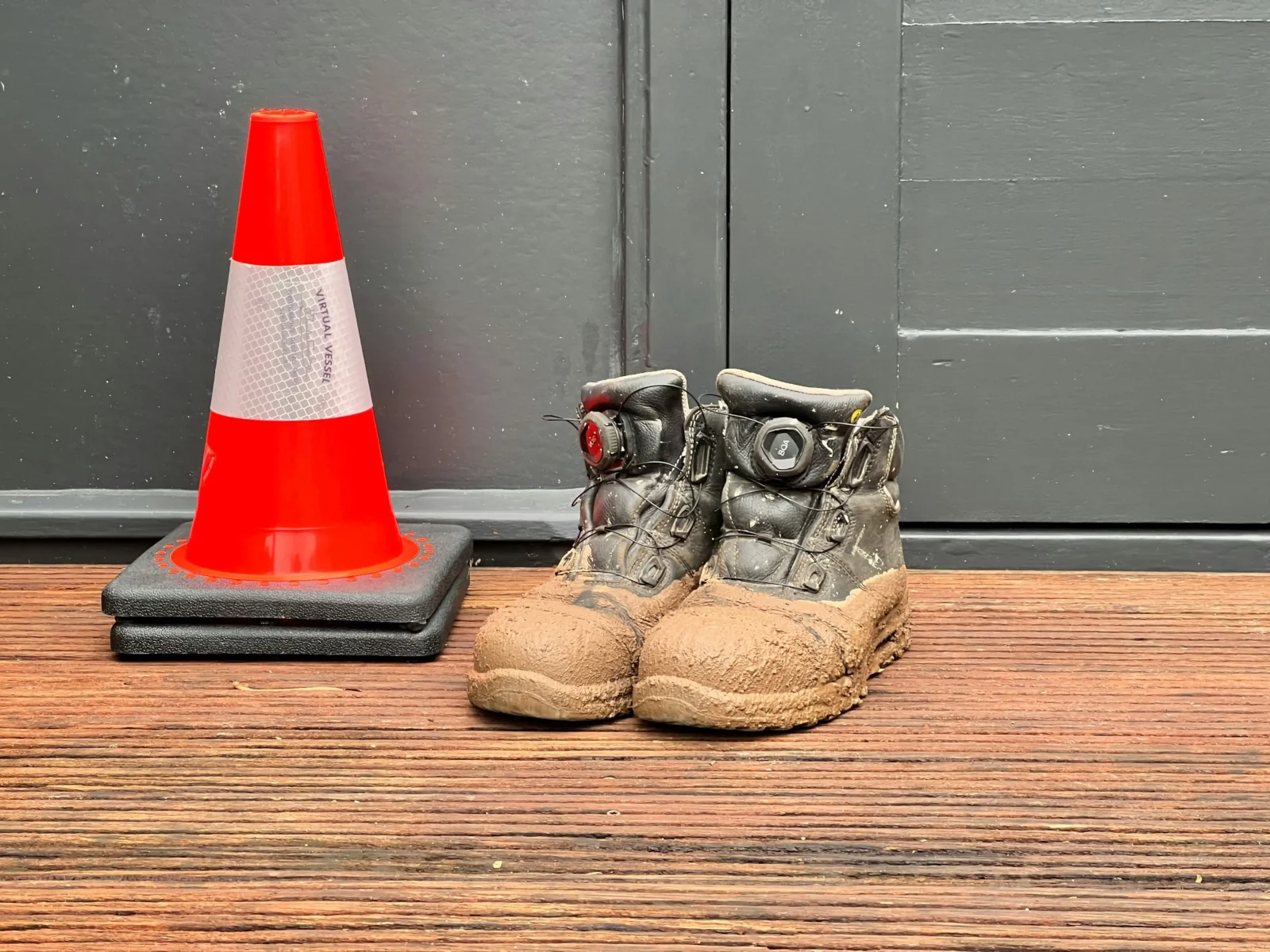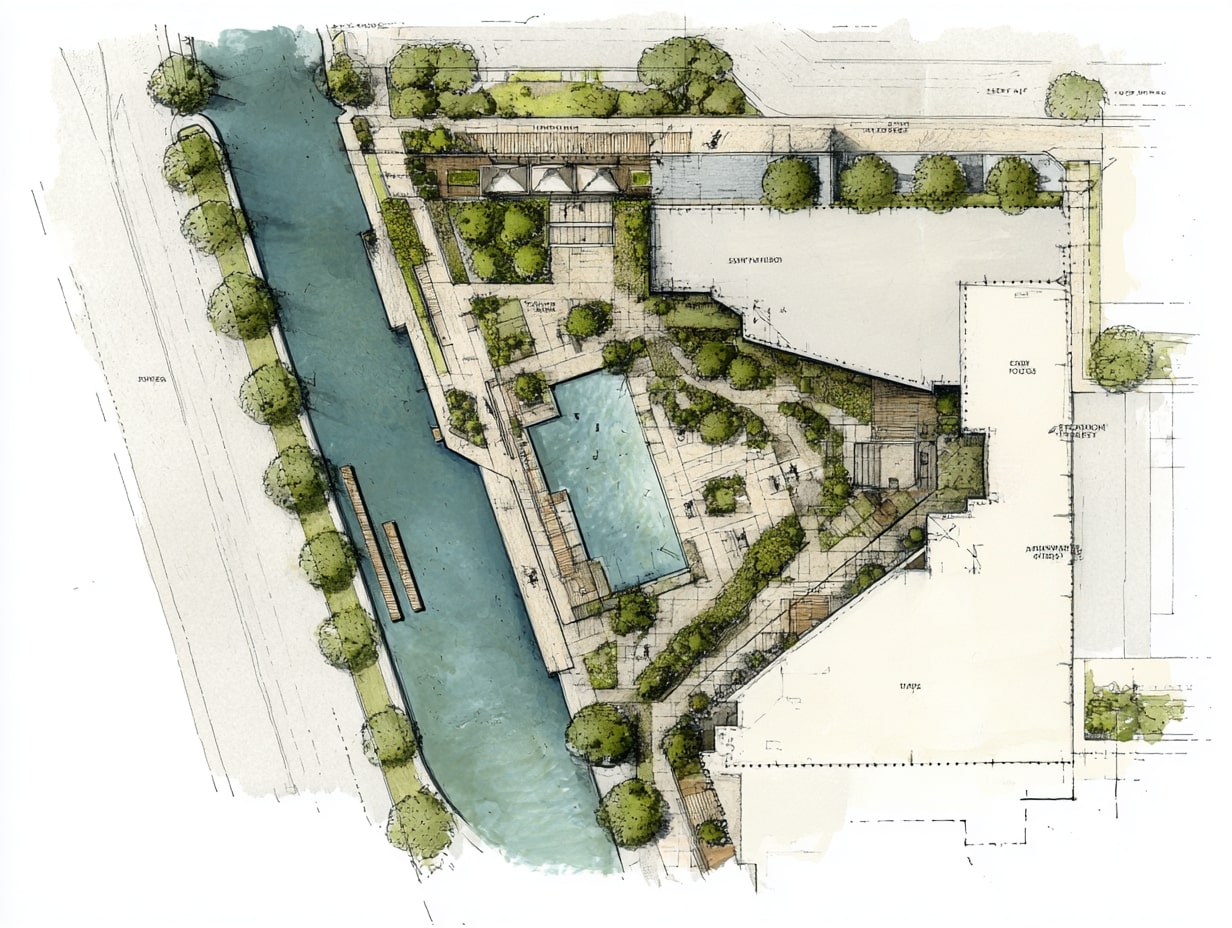- Home
- Articles
- Architectural Portfolio
- Architectral Presentation
- Inspirational Stories
- Architecture News
- Visualization
- BIM Industry
- Facade Design
- Parametric Design
- Career
- Landscape Architecture
- Construction
- Artificial Intelligence
- Sketching
- Design Softwares
- Diagrams
- Writing
- Architectural Tips
- Sustainability
- Courses
- Concept
- Technology
- History & Heritage
- Future of Architecture
- Guides & How-To
- Art & Culture
- Projects
- Interior Design
- Competitions
- Jobs
- Store
- Tools
- More
- Home
- Articles
- Architectural Portfolio
- Architectral Presentation
- Inspirational Stories
- Architecture News
- Visualization
- BIM Industry
- Facade Design
- Parametric Design
- Career
- Landscape Architecture
- Construction
- Artificial Intelligence
- Sketching
- Design Softwares
- Diagrams
- Writing
- Architectural Tips
- Sustainability
- Courses
- Concept
- Technology
- History & Heritage
- Future of Architecture
- Guides & How-To
- Art & Culture
- Projects
- Interior Design
- Competitions
- Jobs
- Store
- Tools
- More
RIBA Work Stages Explained: A Step-by-Step Guide for Successful Architecture Projects
Discover the RIBA work stages, a vital framework that guides architecture projects from concept to completion. This article breaks down each stage—ranging from Strategic Definition to post-occupancy evaluations—highlighting key activities and deliverables.

Navigating the world of architecture can feel overwhelming, especially with all the jargon and processes involved. One crucial framework that guides us through the design and construction journey is the RIBA work stages. Understanding these stages not only helps us streamline our projects but also ensures we meet essential milestones along the way.
In this article, we’ll break down each RIBA stage in a clear and concise manner. From initial concept development to project completion, we’ll explore the key activities and deliverables that define each phase. Whether we’re architects, clients, or stakeholders, having a solid grasp of these stages is vital for successful collaboration and project execution. Let’s dive in and demystify the RIBA work stages together.

Table of Contents
ToggleOverview Of RIBA Work Stages
RIBA work stages consist of a structured approach to managing architecture projects. Each stage has specific tasks, goals, and deliverables, ensuring projects progress in a systematic manner. Understanding these stages enhances collaboration among architects, clients, and stakeholders.

Stage 0: Strategic Definition
Stage 0 involves identifying the project’s viability and initial goals. We assess client requirements and site constraints, allowing for informed decision-making regarding project scope.
Stage 1: Preparation and Brief
Stage 1 focuses on developing a detailed project brief. We collaborate with clients to gather information and clarify objectives. This stage includes creating a feasibility study to outline potential risks and budgets.
Stage 2: Concept Design
Stage 2 entails generating design concepts based on the project brief. We produce sketches and initial plans, offering insight into spatial arrangements and aesthetics. Key deliverables often include preliminary drawings and reports.
Stage 3: Developed Design
Stage 3 expands on the chosen design concept. We refine the design, addressing technical aspects and ensuring compliance with regulations. Deliverables at this stage include detailed drawings, specifications, and updated cost estimates.
Stage 4: Technical Design
Stage 4 involves finalizing the technical aspects of the design. We prepare construction documents and ensure that all systems integrate correctly. Deliverables include comprehensive drawings, specifications, and schedules for construction.
Stage 5: Construction
During Stage 5, construction takes place. We oversee the process to ensure adherence to the design and quality standards. Regular site visits and updates help us address any issues that arise promptly.
Stage 6: Handover
Stage 6 marks the completion of the project. We facilitate the transition between construction and facility management, ensuring clients receive all necessary documentation and training for building operation.
Stage 7: In Use
Stage 7 focuses on evaluating the project’s performance after completion. We gather feedback from users to identify any issues and assess overall satisfaction. This stage informs future projects and improves ongoing maintenance strategies.
Stage 0: Strategic Definition
Stage 0 serves as the foundation for any architectural project, emphasizing the crucial assessment of project viability and the alignment of initial goals with client expectations. Our focus during this stage prepares us for the complexities that lie ahead.

Objectives And Goals
Key objectives drive our efforts in Stage 0. We aim to:
- Identify project viability by evaluating initial concepts against client requirements and site context.
- Clarify client goals to ensure alignment with architectural possibilities and limitations.
- Establish a project brief outlining essential deliverables that guide decision-making throughout the process.
- Determine budget parameters, considering financial constraints while exploring project aspirations.
- Assess potential risks associated with site conditions, legal factors, and stakeholder interests.
These objectives guide us in laying a solid groundwork for seamless progression in subsequent stages.
Key Considerations
Several critical factors shape our approach in Stage 0. We consider:
- Client engagement to foster open communication and articulate expectations effectively.
- Site analysis, including location, zoning laws, and environmental impacts, to identify design opportunities and constraints.
- Stakeholder involvement to ensure that all relevant parties contribute insights, enhancing project outcomes.
- Regulatory requirements, which we evaluate early to comply with local laws and standards.
- Feasibility studies that help assess project benefits versus risks, informing strategic choices.
Addressing these considerations positions our projects for success, setting clear expectations for future development and collaboration.
Stage 1: Preparation And Brief
Stage 1 focuses on preparing a robust project brief that guides the entire architecture process. This stage emphasizes collaboration with clients and thorough assessments, ensuring that all essential details are captured.

Project Brief Development
Project brief development involves creating a comprehensive document that outlines project objectives, scope, and constraints. We establish clear goals that reflect the client’s vision, addressing aspects such as design intent, functionality, and budget. A feasibility study identifies risks and opportunities while assessing site-specific conditions. This brief serves as both a guideline and a reference point for later stages, enabling informed decision-making and minimizing potential conflicts.
Stakeholder Engagement
Stakeholder engagement is vital in this phase, as it gathers insights and perspectives from various parties involved. We actively communicate with clients, end-users, and relevant authorities to clarify expectations and requirements. This collaboration fosters transparency and builds trust among stakeholders, leading to a shared understanding of project goals. Regular meetings and discussions ensure that feedback is incorporated into the project brief, enhancing the final outcome and increasing satisfaction.
Stage 2: Concept Design
Stage 2 focuses on transforming initial ideas into tangible design concepts. This phase sets the creative foundation for the project, allowing for exploration of various spatial configurations and aesthetic considerations.

Developing Design Concepts
Developing design concepts involves creating multiple sketches and plans that illustrate various approaches to space utilization and visual appeal. We explore different themes and materials, aiming to align the designs with the client’s vision and needs. This phase encourages collaboration among architects, clients, and stakeholders to refine ideas. Presenting boards or 3D models helps convey the vision effectively, enabling everyone to visualize potential outcomes and providing an opportunity for constructive feedback.
Initial Assessments
Initial assessments during the concept design stage include evaluating site conditions, zoning regulations, and environmental impacts. We conduct preliminary studies to identify constraints and opportunities that inform our design decisions. Engaging stakeholders and addressing their feedback ensures the design aligns with expectations and requirements. This analysis serves as a critical reference point for the project, guiding us toward feasible design solutions that adhere to both client desires and regulatory standards.
Stage 3: Developed Design
Stage 3 advances the project by refining the chosen design concept. This stage emphasizes technical details and compliance with relevant regulations, enhancing clarity for construction.

Refining Design Proposals
Refining design proposals involves translating conceptual ideas into detailed designs. We create comprehensive drawings that illustrate dimensions, materials, and finishes. Collaboration with engineers ensures that structural integrity complements aesthetic values. Updated cost estimates provide financial clarity, helping us manage budgets effectively. Stakeholder feedback integrates practical insights, aligning the design with functional requirements and enhancing overall satisfaction.
Compliance And Regulations
Compliance with regulations is critical at this stage. We ensure the design adheres to local building codes, zoning laws, and environmental standards. Conducting thorough assessments confirms that all aspects of the design meet safety and health requirements. Engaging with relevant authorities early in this stage streamlines approvals, minimizing potential delays. Maintaining detailed documentation demonstrates compliance and facilitates easier reviews in future work phases.
Stage 4: Technical Design
Stage 4 focuses on finalizing technical aspects, preparing construction documents, and ensuring system integration for the project. This stage is crucial for turning design concepts into actionable plans that guide the execution of construction.

Detailed Design Documentation
Detailed design documentation consists of comprehensive drawings, specifications, and schedules essential for construction. We produce architectural plans, structural details, electrical layouts, and plumbing diagrams to ensure clarity in implementing the design. Each document must clearly indicate dimensions, materials, and performance specifications to facilitate accurate construction and compliance with building codes. This documentation serves as a reference point throughout the construction phase, minimizing ambiguities and streamlining contractor collaboration.
Collaboration With Consultants
Collaboration with consultants is vital to ensure all technical elements integrate seamlessly. We engage various professionals, including structural engineers, mechanical engineers, and electrical engineers, to evaluate design feasibility and systems coordination. Regular meetings facilitate open communication, allowing us to address potential challenges and incorporate feedback effectively. This teamwork guarantees that every aspect of the project aligns with our clients’ needs, meets regulatory standards, and supports the overall design intent. Engaging consultants early in this stage helps prevent delays and enhances design quality, ensuring a smooth transition to construction.
Stage 5: Construction
Construction focuses on executing the design while maintaining quality. This stage involves careful oversight and coordination to keep the project on schedule and within budget.

Phases Of Construction
- Site Preparation: We clear the site, establish access, and set up temporary utilities. This phase involves surveying, grading, and ensuring all necessary permits are in place.
- Foundation Work: We construct the foundation that supports the entire structure. This includes excavation and pouring concrete, addressing soil conditions, and utilizing appropriate materials.
- Superstructure Construction: We erect the primary structure, which includes walls, floors, and roofs. This involves framing, masonry, and installation of structural elements, emphasizing strength and safety.
- Building Enclosure: We install exterior finishes, such as roofing, siding, and windows. This phase ensures weather protection and energy efficiency.
- Interior Construction: We focus on internal partitions, ceilings, and systems installations. This includes plumbing, electrical, and HVAC systems, ensuring compliance with design specifications.
- Finishing Work: We apply final touches like flooring, painting, and fixtures. This phase enhances aesthetics and functionality, leading to overall project completion.
Quality Control Measures
- Regular Inspections: We conduct periodic inspections to assess workmanship and compliance with design specifications. This ensures that all construction aligns with regulatory standards.
- Material Testing: We perform tests on materials to verify their quality and suitability. This includes concrete tests, structural evaluations, and equipment checks, guaranteeing durability and performance.
- Documentation and Reporting: We maintain thorough records of construction progress, changes, and issues. This documentation aids in tracking compliance and provides a clear historical account of the project’s development.
- Stakeholder Involvement: We engage stakeholders through regular updates and feedback sessions. This collaboration addresses concerns early and fosters an environment for shared success.
- Safety Measures: We prioritize safety protocols to protect workers and the public. This includes establishing safety training programs, conducting site evaluations, and ensuring compliance with health and safety regulations.
Stage 6: Handover And Close Out
Stage 6, Handover and Close Out, signifies project completion and facilitates the transition to operational use. This stage ensures that clients receive all necessary documentation and training for effective facility management.

Final Inspections
Final inspections confirm that the completed project meets the specified design requirements and regulatory standards. We perform these inspections to verify the quality of workmanship, adherence to construction documents, and compliance with safety codes. Key components of the final inspections include:
- Quality Assurance: We assess the overall quality of the construction, identifying any defects or issues that need resolution.
- Compliance Checks: We ensure that all building codes and regulations are met, confirming that the project aligns with local authority requirements.
- Performance Testing: We conduct tests on critical systems such as HVAC, plumbing, and electrical to guarantee their functionality and efficiency.
Documentation And Training
Documentation and training equip clients with the tools needed for effective facility management. We deliver essential manuals, warranties, and maintenance instructions. Key aspects include:
- Operation Manuals: We provide comprehensive manuals for building systems, detailing operational procedures and maintenance schedules.
- Warranties and Guarantees: We hand over warranty documentation for materials and systems, ensuring clients understand their coverage and responsibilities.
- Training Sessions: We conduct training workshops for clients and facility managers to familiarize them with operational systems, emergency procedures, and maintenance tasks.
Effective handover and close-out processes ensure a smooth transition into usage, fostering long-term satisfaction and operational efficiency.
Stage 7: In Use
Stage 7 involves assessing the project’s performance after completion, emphasizing ongoing evaluation and user experience. This stage captures vital insights that shape future projects and enhance facility operation.

Post-Occupancy Evaluation
Post-occupancy evaluation (POE) involves gathering feedback from occupants to assess how well the building meets their needs. This process includes surveying users about their experiences concerning comfort, functionality, and overall satisfaction. Data collected helps us identify areas for improvement and informs future design approaches. POE also identifies potential operational issues, such as energy efficiency and maintenance performance, by analyzing actual use versus initial expectations. Engaging with occupants enhances our understanding of a building’s performance, ensuring that lessons learned feed into subsequent projects.
Lessons Learned
Lessons learned in this stage highlight critical insights gained throughout the project’s lifecycle. By analyzing successes and challenges, we document best practices and pitfalls for future reference. This includes detailing aspects such as design decisions, stakeholder engagement methods, budget adherence, and time management effectiveness. Disseminating these findings among team members and stakeholders fosters a culture of continuous improvement. Sharing lessons learned encourages innovation and optimizes processes, ensuring we develop more effective and efficient architectural solutions in future projects.
Conclusion
The RIBA work stages serve as a structured framework guiding architectural projects from inception to completion. Each stage outlines essential tasks, deliverables, and collaboration necessary for successful execution.
- Stage 0: Strategic Definition establishes project viability and identifies client goals, providing a foundation for informed decisions throughout the process.
- Stage 1: Preparation and Brief enhances understanding through client collaboration to develop a thorough project brief, ensuring objectives align with stakeholder expectations.
- Stage 2: Concept Design translates initial ideas into tangible formats, facilitating creativity and collaboration among architects, clients, and stakeholders, while responding to feedback and expectations.
- Stage 3: Developed Design refines chosen concepts, emphasizing technical details and compliance, streamlining the transition toward construction.
- Stage 4: Technical Design focuses on comprehensive construction documentation and system integration, ensuring clarity and regulatory compliance.
- Stage 5: Construction executes design plans with strict quality control and oversight to maintain timelines and budget adherence.
- Stage 6: Handover and Close Out ensures clients receive necessary documentation and training for successful facility management post-completion.
- Stage 7: In Use gathers feedback to evaluate performance and inform future projects, fostering continuous improvement.
Understanding and navigating these stages enhances collaboration among architects, clients, and stakeholders, ultimately leading to successful project completion and operational efficiency.
- architectural design stages
- architectural project phases
- architecture project stages
- design process RIBA
- RIBA architecture framework
- RIBA building stages
- RIBA construction phases
- RIBA design process
- RIBA framework
- RIBA guide
- RIBA Plan of Work
- RIBA planning
- RIBA project lifecycle
- RIBA project management
- RIBA stage breakdown
- RIBA structure
- RIBA work stage definitions
- RIBA Work Stages
- RIBA workflow
I create and manage digital content for architecture-focused platforms, specializing in blog writing, short-form video editing, visual content production, and social media coordination. With a strong background in project and team management, I bring structure and creativity to every stage of content production. My skills in marketing, visual design, and strategic planning enable me to deliver impactful, brand-aligned results.
Submit your architectural projects
Follow these steps for submission your project. Submission FormLatest Posts
Understanding Site Safety Footwear in Architectural Practice
Architecture is often discussed through drawings, models, and finished buildings, yet a...
General Arrangement Drawings in Architecture: The Backbone of Clear Design Communication
General Arrangement Drawings explained: what they are, when to use them, how...
The Ultimate Guide to Fencing in North Dakota: Choosing the Best Fence for Your Property
Watching a chain link fence twist in 70 mph winds near Minot...
Gaudí: Where Architecture Meets Science
Gaudí: Where Architecture Meets Science shows catenary arches, ruled surfaces, and biomimicry...












Leave a comment